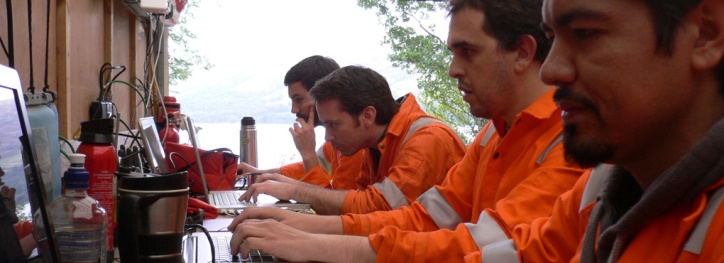Current challenges and future opportunities on Underwater Robotics
Pedro Patron
Engineering Manager
SeeByte Ltd.
http://www.seebyte.com/
25 October 2017
2:15pm - 3:15pm
EM3.07
Abstract
The underwater domain covers 71% of the Earth’s surface, driving weather, regulating temperature, and ultimately supporting all living organisms. For all of our reliance on the ocean, 95 percent of it still remains unexplored. The underwater domain challenges some of the capabilities taken as granted in other domains, such as pressure, light, and attenuation of signal waves.
This talk provides an overview of recent successes on a variety of applications where underwater robots are being used regularly to provide access to this challenging environment. Robots are now producing higher quality data, while reducing risk from divers and reducing the number of vessels needed to perform operations. SeeByte’s core software solutions focus around autonomy, control and signal processing. These key technologies enable persistency, mission adaptation and collaborative operations of underwater robots interacting with human operators. SeeByte’s technologies have now made single and multi-robot autonomous missions a commercial reality for the underwater.
This presentation will also describe the lessons learned through the journey, as technologies transitioned from technical research demonstrators to fielded software systems. Research and interest in underwater robotics is now at its peak, but adoption is slow. In-water trials incur expensive costs and customer trust around autonomy is difficult to gain and easy to lose. Robotics research continues to receive massive interest as successes are demonstrated in medical, domestic, manufacturing, offshore and the military domains. SeeByte continue to invest in future research opportunities including adaptive learning, data management, intervention (manipulator arms) and human-machine interaction; and are keen to develop collaboration opportunities with university research labs and groups where possible.


Company profile
Operating from offices in Edinburgh, Southampton, Boston and San Diego, SeeByte has achieved a position of leadership in the development of smart software for underwater vehicles, sensors and systems in both the Military and Oil & Gas sectors. SeeByte provides products and services to major government and commercial clients around the world.
SeeByte first came to be in 2002 in the Oceans Lab at Heriot-Watt University. Since then it has rapidly expanded and become a world leader in smart software solutions with a truly global market presence. In October 2013 SeeByte was acquired by Battelle Memorial Institute. SeeByte has a presence in many overseas markets from Europe, to the Far East, Australia and the United States. As a result there are opportunities to work with state-of-the-art subsea robots including global travel and at-sea experiments.
Bio
Dr. Pedro Patron obtained his PhD in Electrical Engineering from Heriot-Watt University (UK) in 2010 for his research in adaptive mission planning for unmanned systems. He joined SeeByte in January 2011, to lead the development of SeeByte’s SeeTrack Neptune, a product that delivers adaptive planning for optimizing the execution of behaviors during collaborative multi-vehicle operations.
Pedro was a technical lead for the underlying Autonomy Architecture that is now used on most SeeByte products. Dr. Patron currently leads the Autonomy Program at SeeByte, an engineering group that expands from fundamental research studies to the delivery of high-quality products and services. He has project managed several international and multidisciplinary programs for the US Navy, MoD DSTL, other allied navies, and the Oil&Gas market. Most recently Pedro led the multi-nation sea-trial exercise where different groups of varied unmanned systems autonomously collaborated across the air, surface and underwater domains. For this work he received The Technical Cooperation Program Award from the MoD.